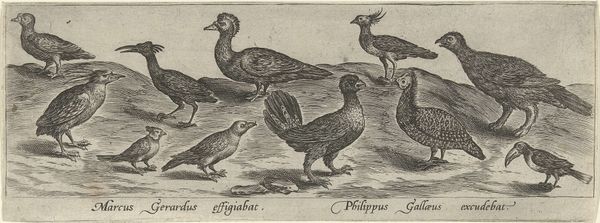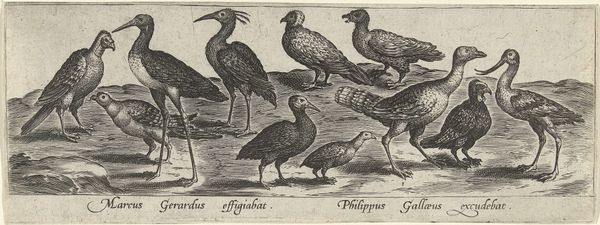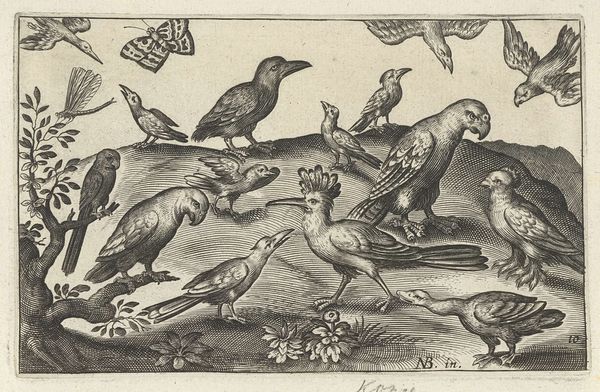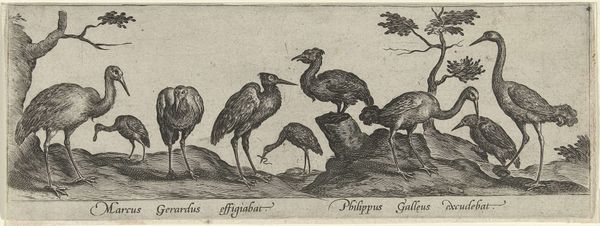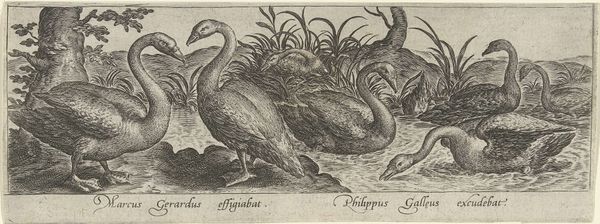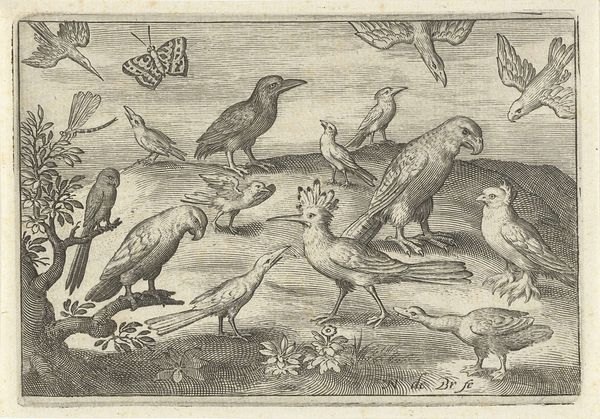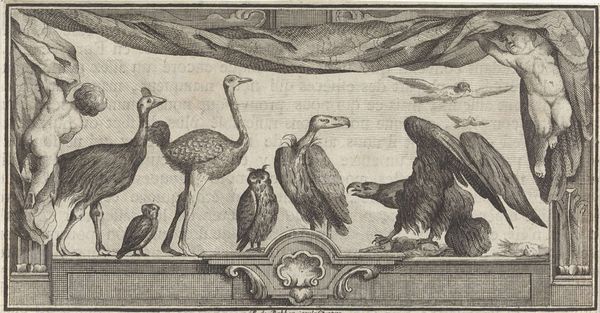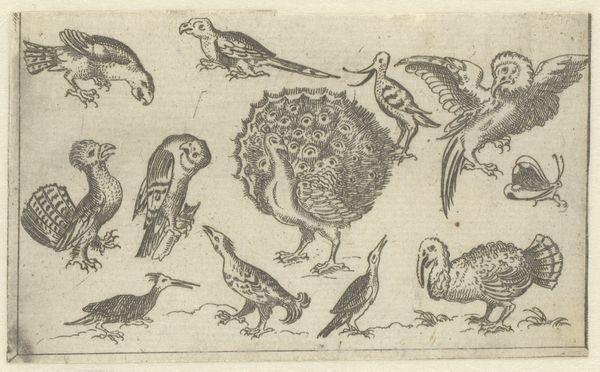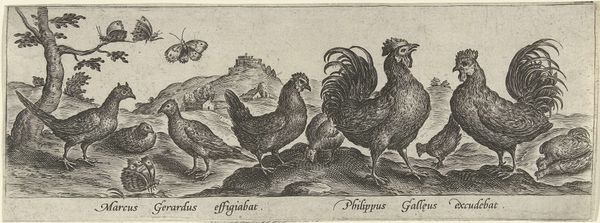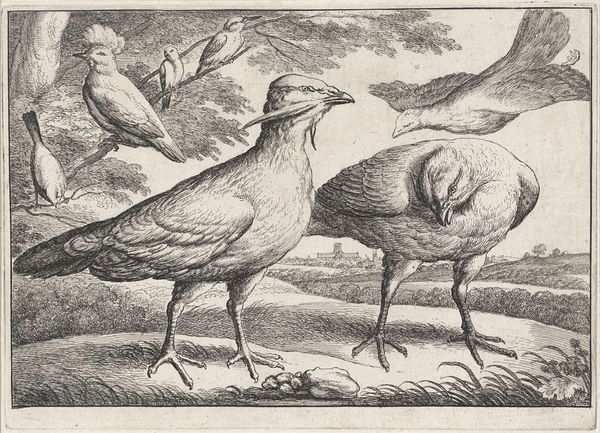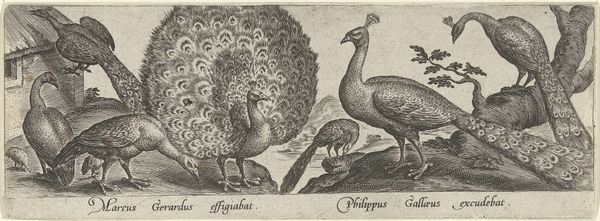
print, engraving
#
animal
# print
#
bird
#
line
#
northern-renaissance
#
engraving
#
realism
Dimensions: width 208 mm, height 79 mm
Copyright: Rijks Museum: Open Domain
Editor: Here we have "Twenty-Three Birds", or "Drieëntwintig vogels", an engraving dating from around 1547-1590 attributed to Philips Galle. I'm struck by the artist's precision in capturing the textures and postures of each bird. What stands out to you? Curator: What I see is a moment of intense interest in the natural world during the Northern Renaissance, fueled by exploration and the desire to categorize and understand the world. These images, often printed, served as accessible tools for studying nature. Who had access to such images, and what kind of social currency did this sort of visual knowledge provide at that time? Editor: So, it was more than just about art, it also signified a certain level of learning, or access to scientific observation? Curator: Precisely. Prints like these made knowledge portable. They reflect a society where scientific observation and artistic representation were intertwined. They represent not just what these birds looked like, but what people valued and wanted to know, revealing both human and societal intention. Who, within their society, controlled access to this visual vocabulary? Editor: It's interesting to consider the power dynamic involved with access to this printed knowledge. The visual is as much about the birds as it is about controlling the narrative about nature. I hadn't thought of it that way! Curator: Indeed. Analyzing it as more than "just art" opens up an entirely new understanding. We see art then as a product *of* culture and power, not merely a reflection *on* culture. Editor: Thank you, I'll certainly approach other artwork with these power dynamics in mind from now on.
Comments
No comments
Be the first to comment and join the conversation on the ultimate creative platform.
